Read part five of Stories from the Gobi Desert: The Ongi Monastery
The sixth and last day of our Gobi tour had no set itinerary, apart from where we were going to stay for the night. Luckily, Byamba and Bagii chose an amazing place with much to see and do, but we were technically no longer in the actual Gobi Desert, when we arrived there; we were in Central Mongolia, in the outskirts of the desert.
We had a long day of driving through the desert before getting there, about 300 km. in total, half on bumpy dirt roads and the other half on asphalt roads, which was a welcome change. I can’t even describe how relieved I was when we finally reached the asphalt road after 5 days of being jolted up and down on the dirt roads.
While Mongolia is famous for its endless blue skies, it can also change as quickly as anything. Just when we reached the asphalt road, the blue skies disappeared and thick clouds took over, giving us the first grey sky for days. I guess you can’t have it all.

We drove for hours through mountains, vast steppe, rocky terrain and flat sand dunes. The sand dunes are called Elsen Tasarkhai and are much flatter than the ones at Khongor, but still very beautiful, especially with the mountainous backdrop. Our ger accommodation was located just a few kilometres from the dunes, although the frosty weather that we experienced later on made it impossible to explore them.

Before getting to the gers, we stopped at a roadside restaurant, which was also in a ger. Here, we saw some large birds flying across, which I thought were kites or eagles (credit if you can tell me what they are). They were pretty huge and the biggest birds I had ever seen!




It started snowing while we were eating our lunch, and when we got to the ger accommodation, located at the foot of the Elsen Tasarkhai mountains, the ground was covered in a white blanket of snow. It was freezing outside, so we all quickly rushed into our guest ger to get some heat before meeting Dorio and Dolgor, who own the place, and Dolgor’s mother Ajaa. It was a big change from the hot weather the day before, but it just goes to show how unpredictable the Mongolian weather is. It was hard to believe that I was sitting outside with no jacket on just one day earlier!

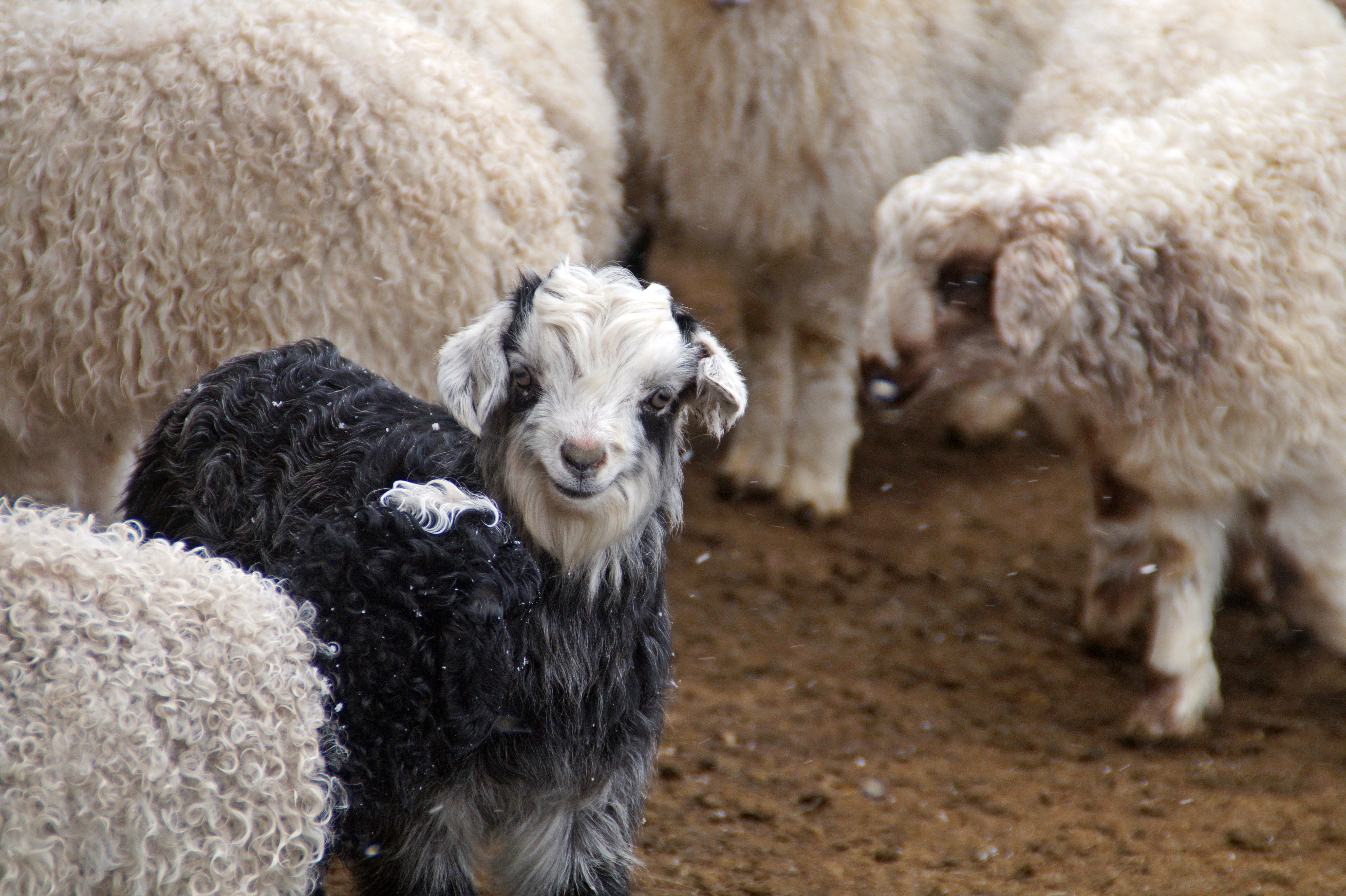
We got there in the early afternoon, so we still had plenty of daylight hours to go hiking and horse trekking in the mountains. I can’t remember the last time I was on the back of a horse, but I do remember falling off it, which didn’t exactly make me overly excited about trying it again. But I was in the Gobi and it was included in the tour, so I thought I might as well. After all, it wasn’t like I was going off on my own with the horse; I would be tied together with the others while Dorio did all the work.
While we were waiting for Dorio to get the horses ready, it started snowing really heavily, so we wrapped ourselves up in thick clothes and a thick deel for a coat. A deel is a traditional Mongolian coat that has been worn for centuries by the nomads.
The deel managed to keep my body warm during the horse trekking, but my face was a whole other story. Aida, Lisa and I went for our horse trek first, which was… eh, interesting. We knew that we would be tied together, but the way it was, was just ridiculous. We were tied so tightly together that we didn’t even have a chance to try anything on our own – let alone go by ourselves at any point. It wouldn’t have been the best thing for me to do anyways, but I so wanted to prove to myself that I was better at handling horses now that I was no longer (technically) a child. But that wasn’t going to happen on this – very touristy – horse trek.
Despite the weird set up, the trek was beautiful with views of the snowy mountains on the way out. On the way back to the gers, we couldn’t see a thing, as it started hailing really heavily, so we had to cover our faces and gallop until we finally got back and rushed inside the ger to get some heat back in our bodies. You would’ve thought that the Viking blood in me would make me tough in cold weather, but nope.
Afterwards, it was Luke’s and Alex’s turn to experience the chilly horse trekking, so the girls and I spent the time drinking beer with some guys from another tour group.

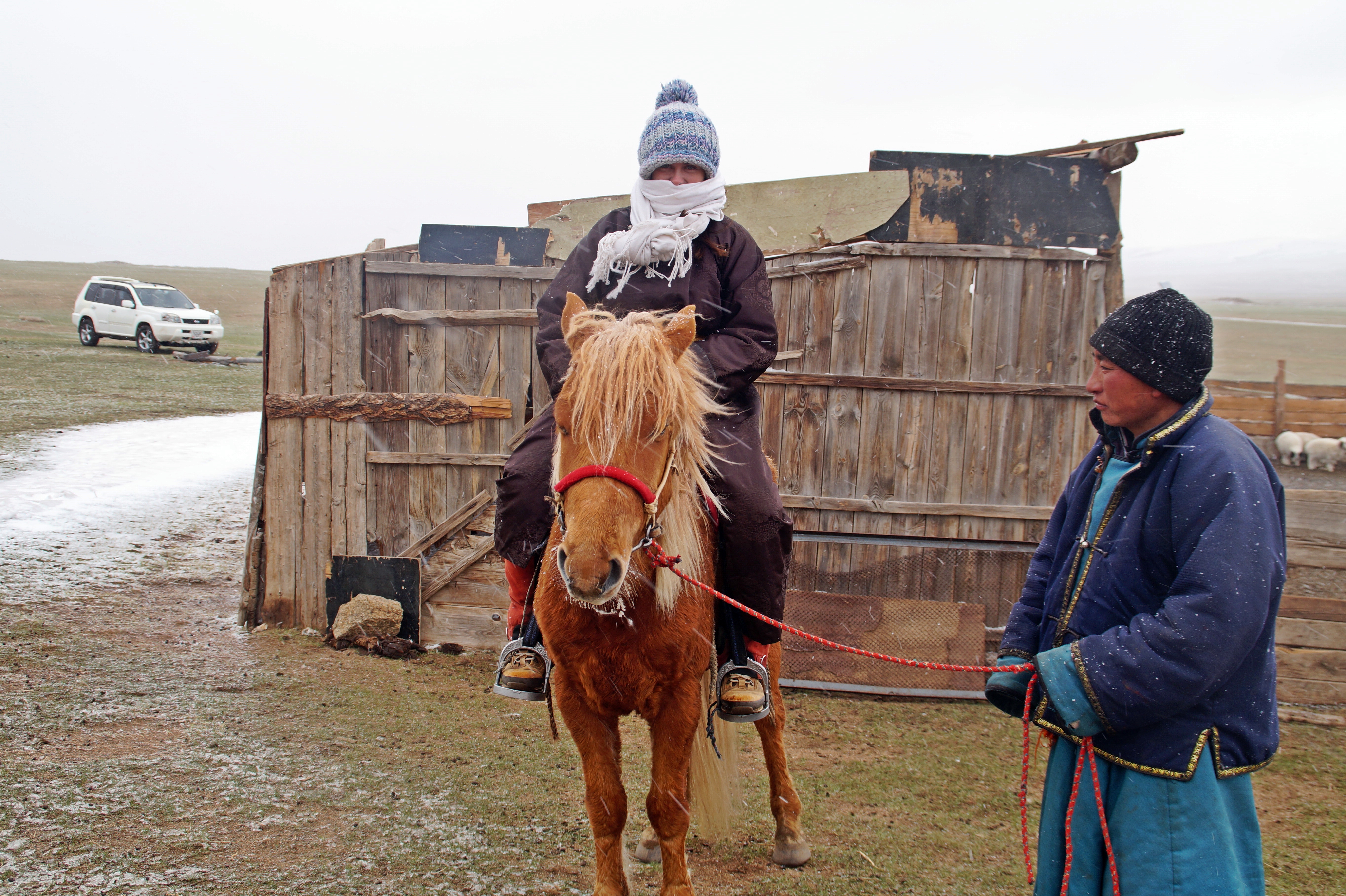
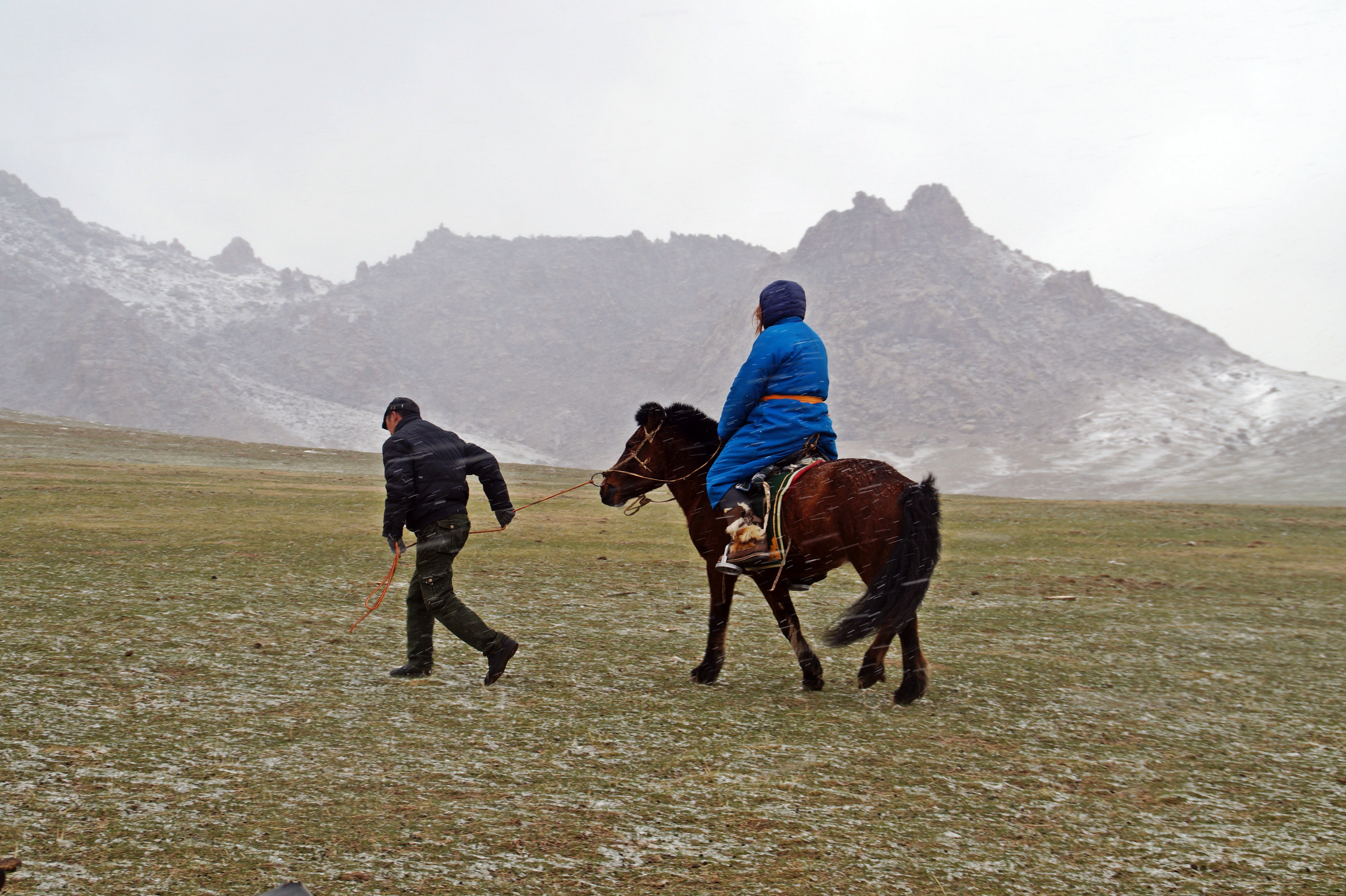
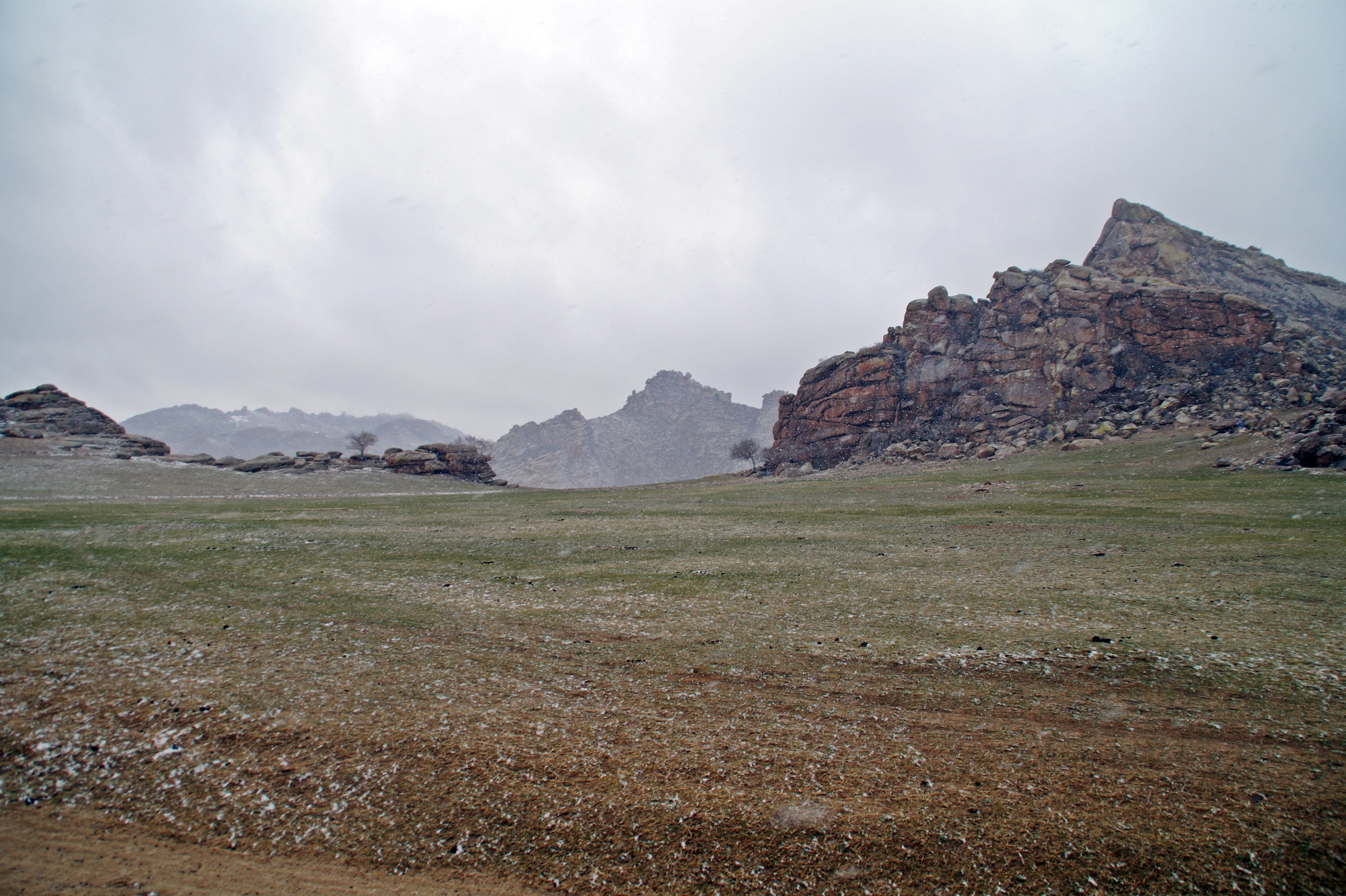
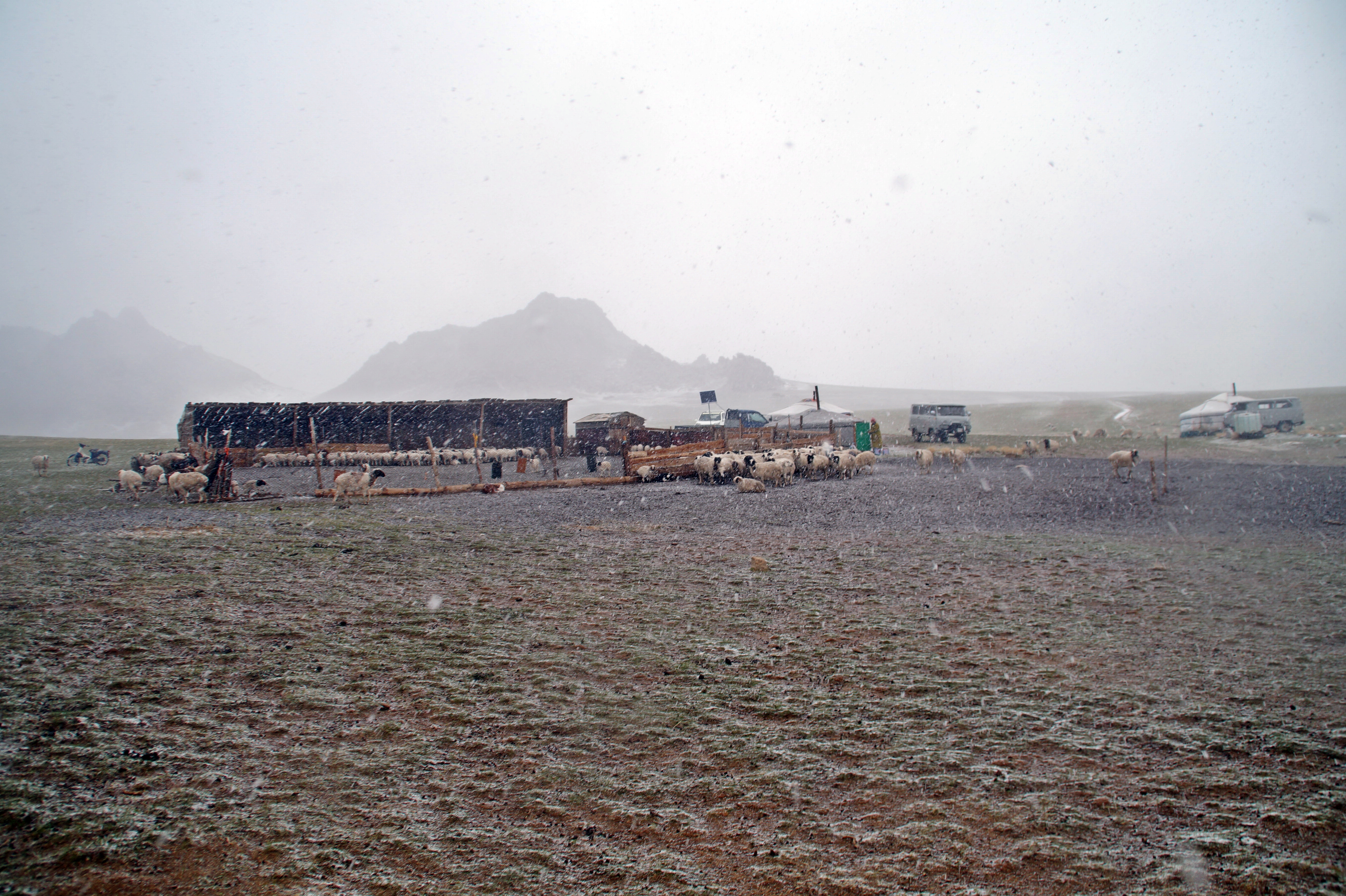
When the boys got back, Luke told us what an amazing time they had had and that they were able to go off on their own as well… Typical. They didn’t even look the slightest bit cold, while we had been trying not to die out there.
Luke and I decided to spend the rest of the daylight hours on a little mountain expedition. As we climbed up the mountain behind the gers, the snow was still falling heavily, blocking our view in a curtain of white. I had borrowed a really warm jacket, so I didn’t feel like giving up this time. Despite the heavy snow, the climb was really easy, and once we got to the top, the skies actually cleared for a bit and we were able to see some amazing views of the surrounding mountains and the steppe. As we walked back down the mountain, we watched the sun set behind the clouds, creating some beautiful contrasting colours with the snow.
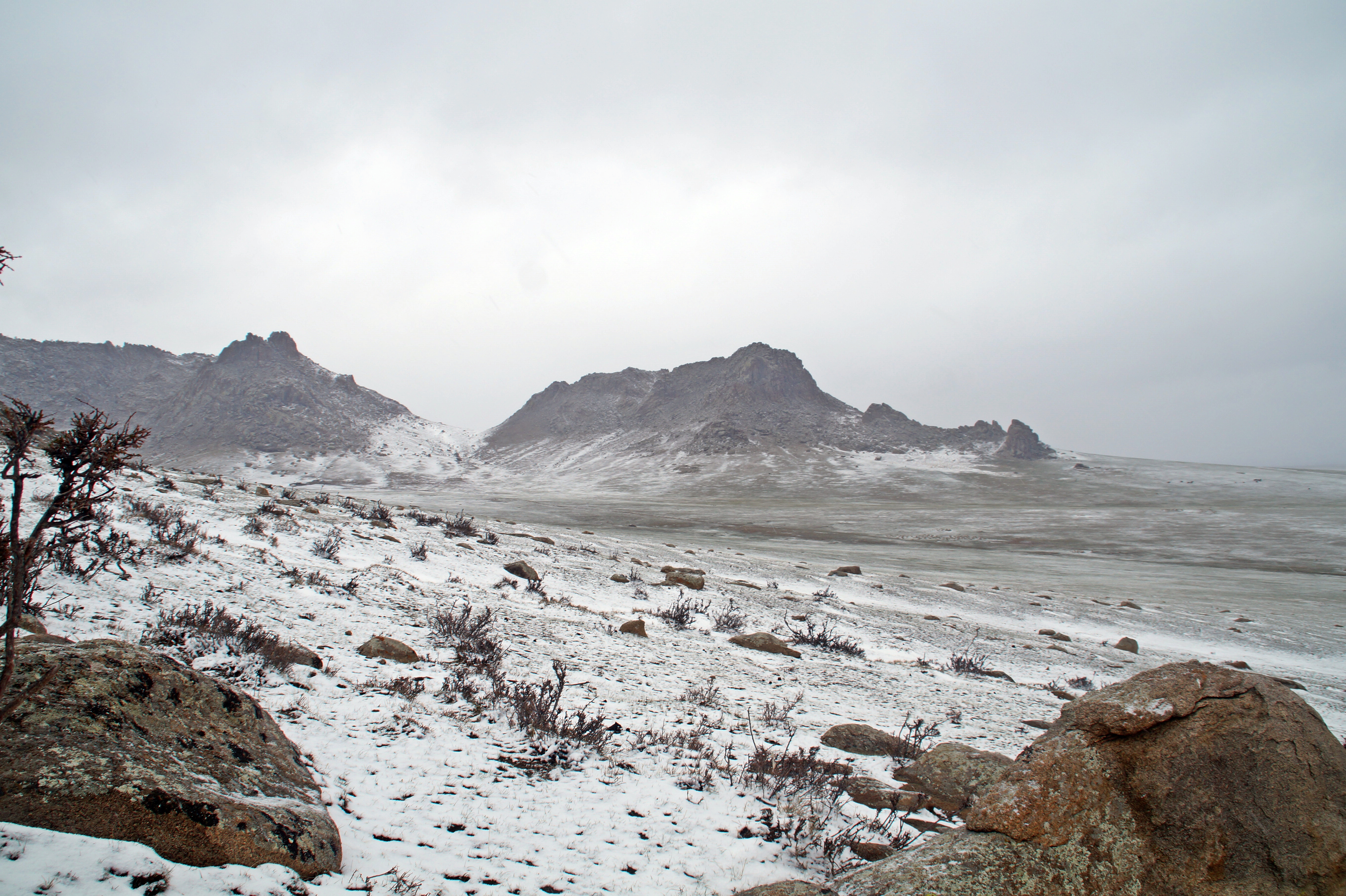

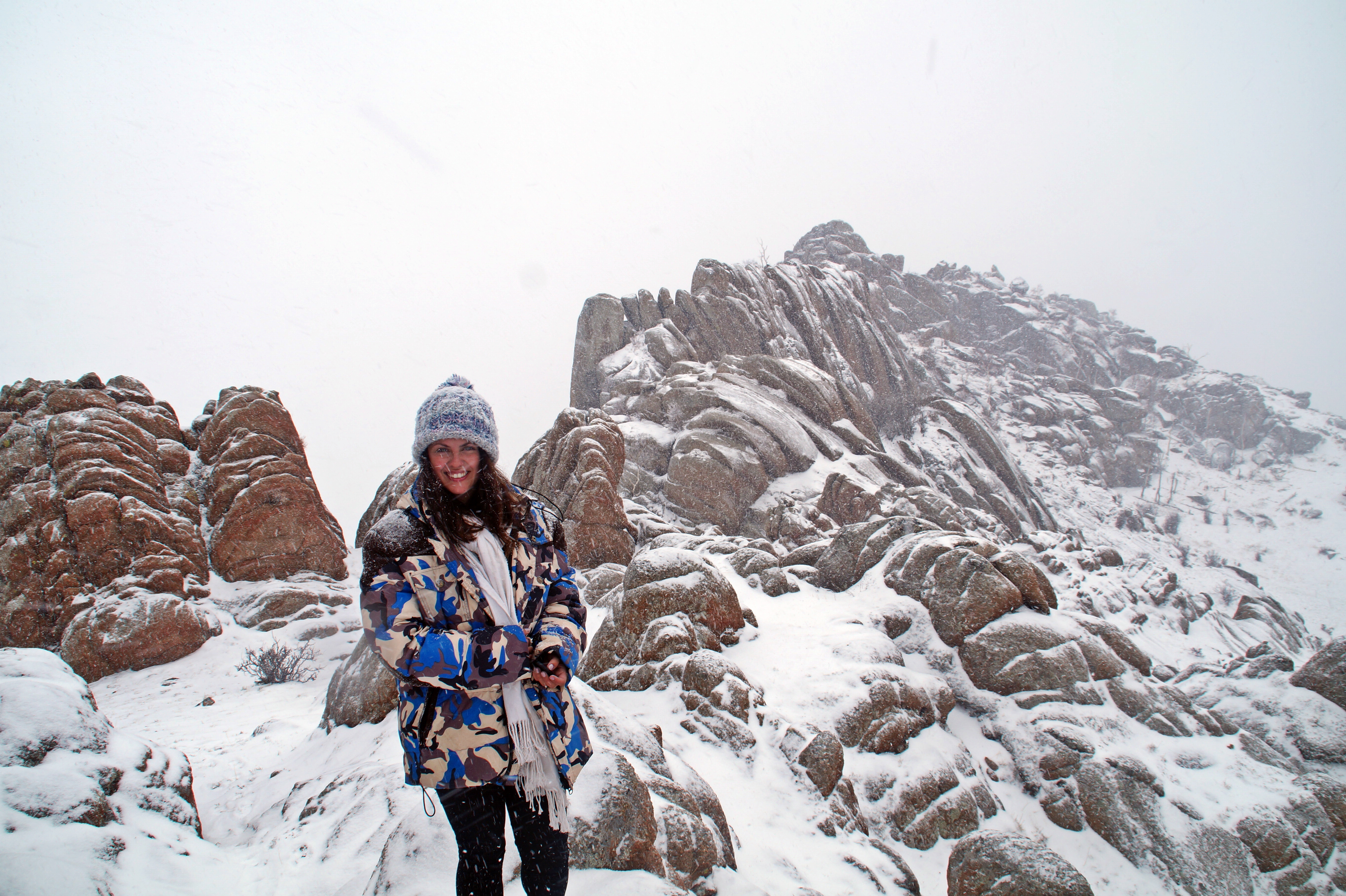
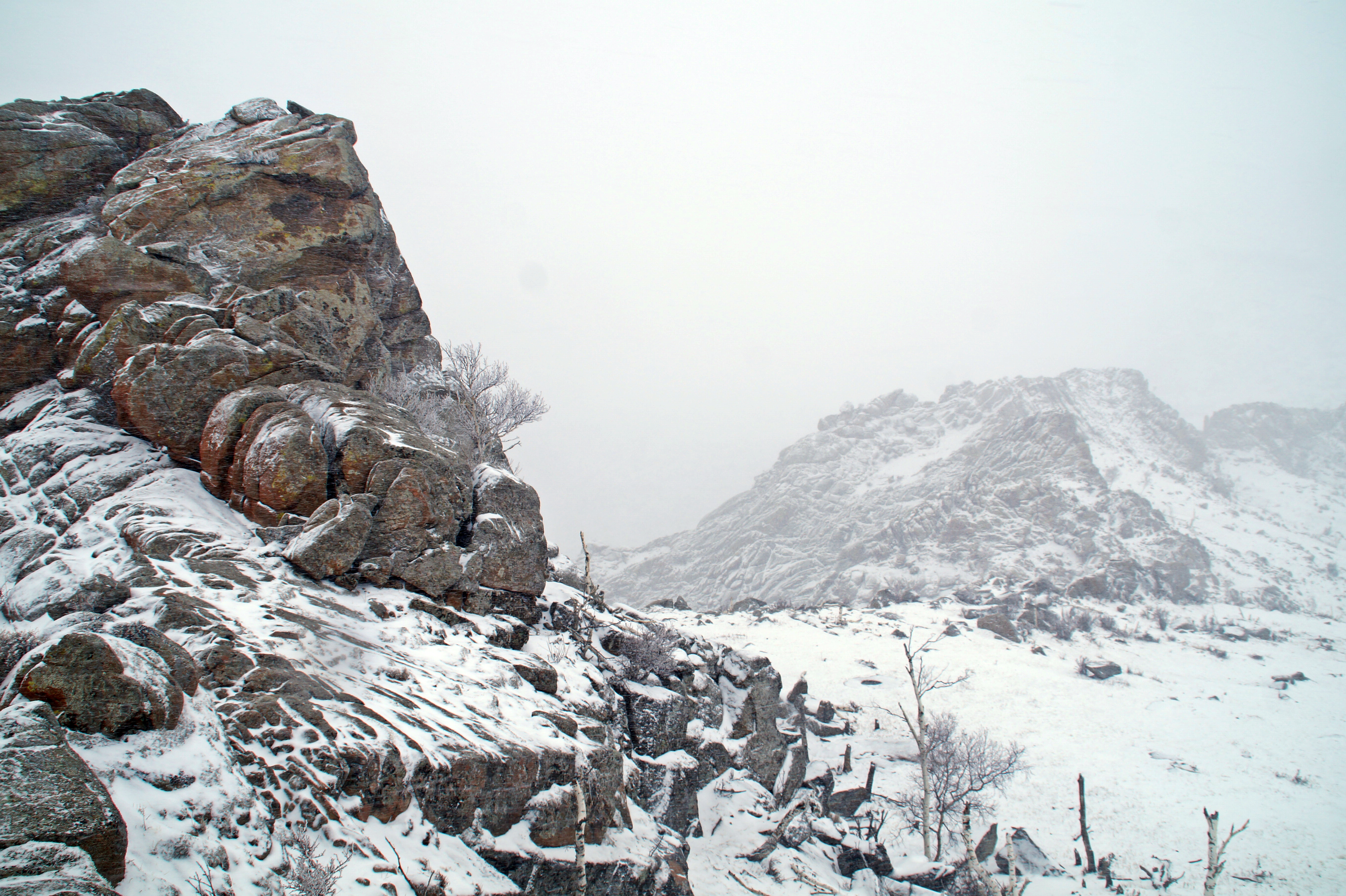
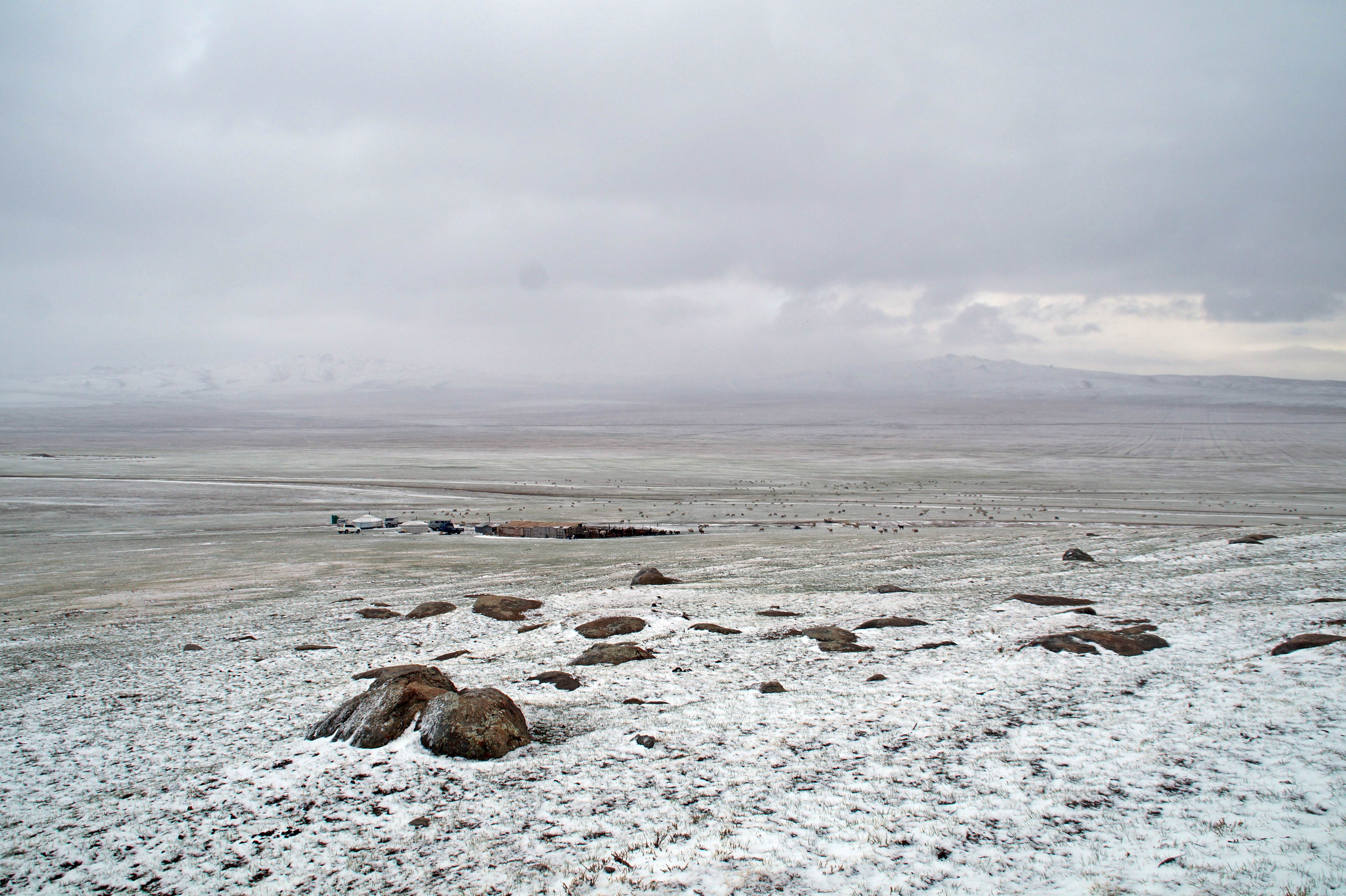
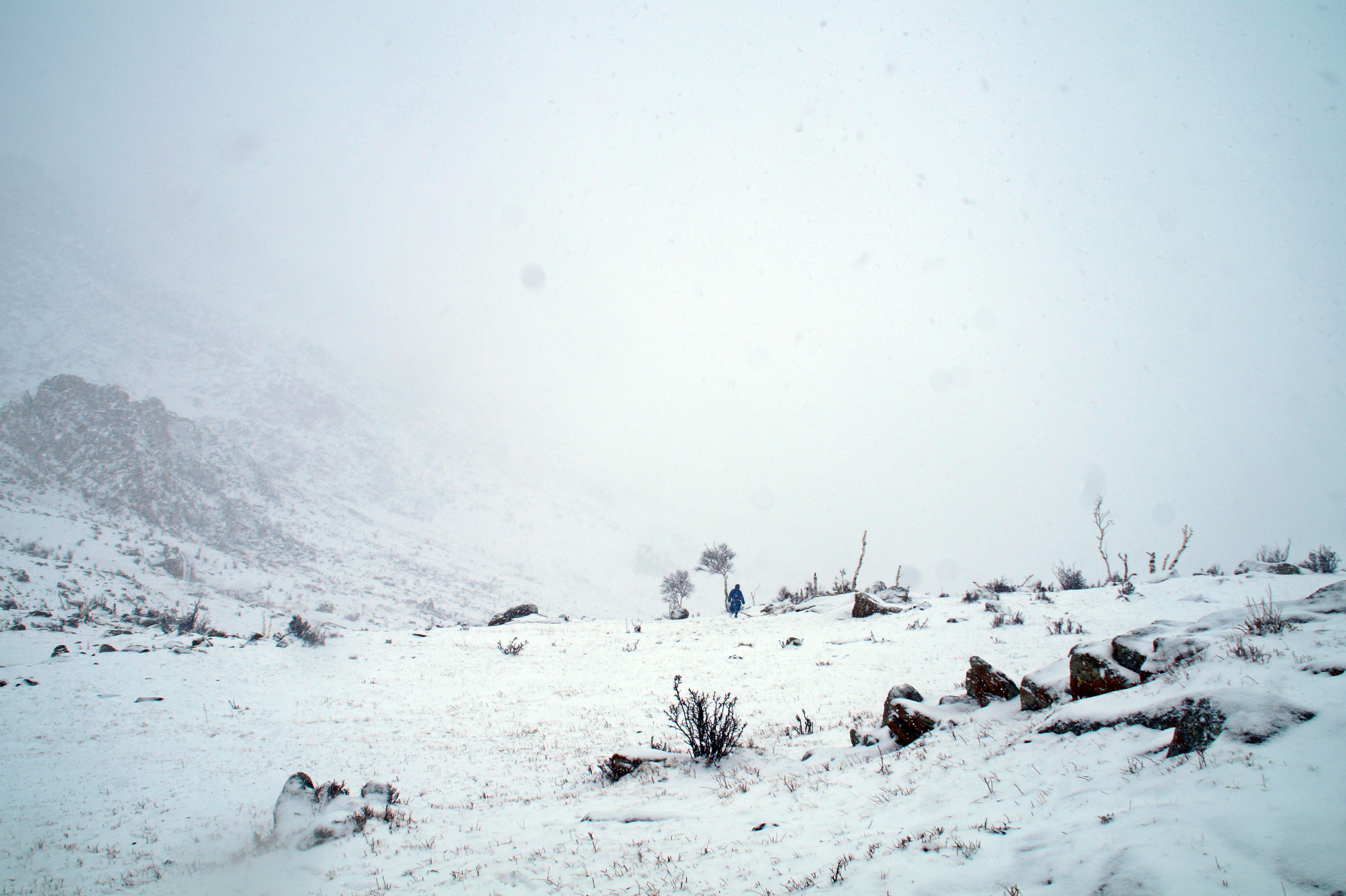
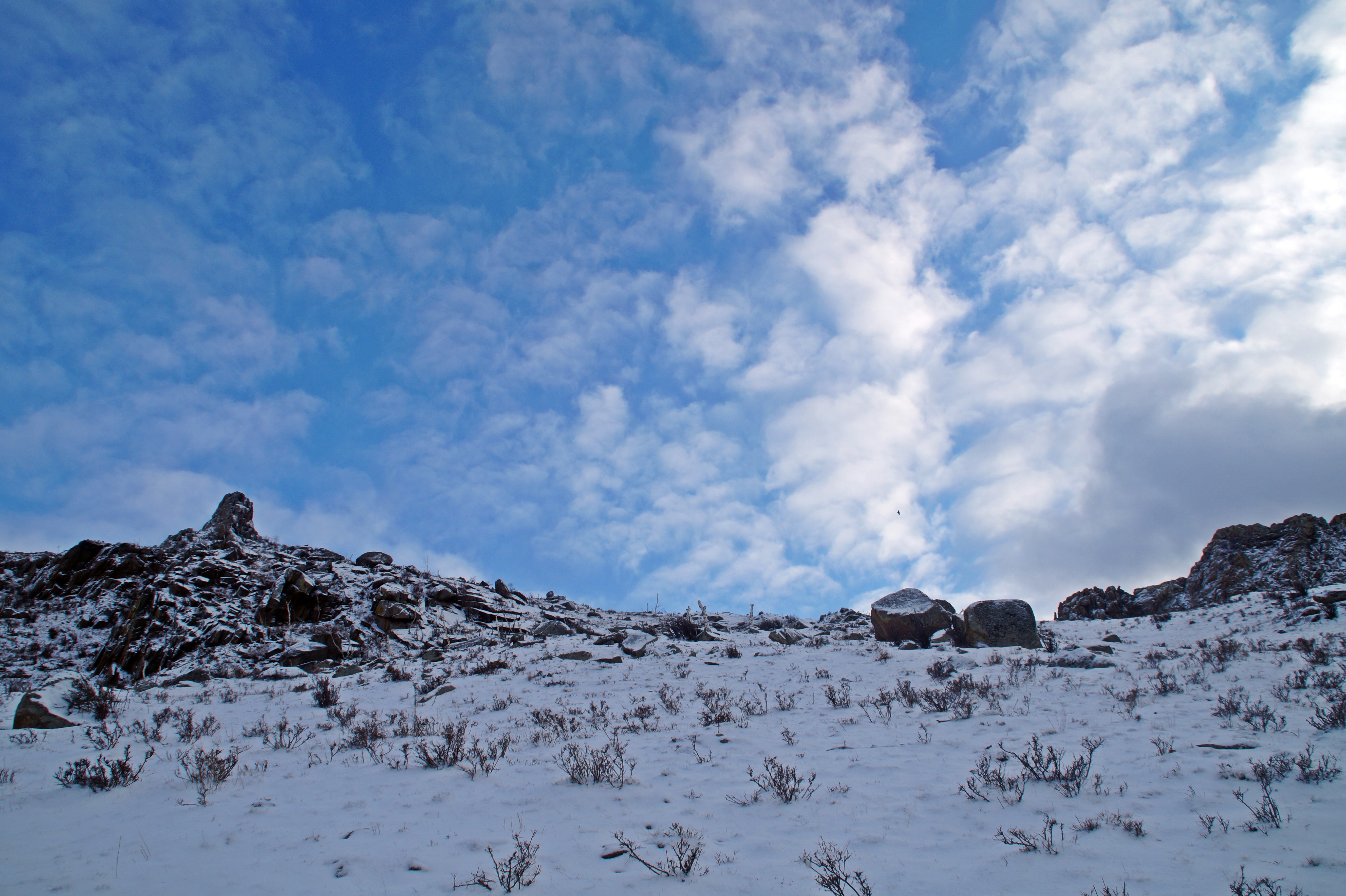


The evening was spent with a friend called alcohol, although I decided to not participate in too much of it. I found the Mongolian way of drinking to be quite difficult to accept. There is a lot of alcohol abuse going on and it’s normal to drink every day. It’s even acceptable for small children to drink at times. The traditional way of drinking in Mongolia (at least for the nomads) is to pass around beer or vodka to everyone in the room, all sharing the same glass – and therefore saliva – and basically pressuring everyone present to have a sip of the glass.
At one point, I decided that I had had enough – both of the alcohol and of what I was observing – so I refused to take my sip of the glass and that immediately triggered reactions from people, who wouldn’t seem to accept it. They kept encouraging me to drink it, although I had clearly said that I didn’t want to. I’m not one to fall into peer pressure, so I didn’t end up having a sip, but they made me feel like I was disrespecting their culture. But to be honest, I don’t want to accept an alcohol culture, because it’s simply not healthy, and I especially don’t want to support a peer pressuring culture. It really is a shame, because I love everything else about the Mongolian people and their alternative lifestyle.
Apart from the small alcohol incident, I had a great last evening and – even better – I wasn’t hung over for the 300 km. drive back to Ulaanbaatar the next morning.
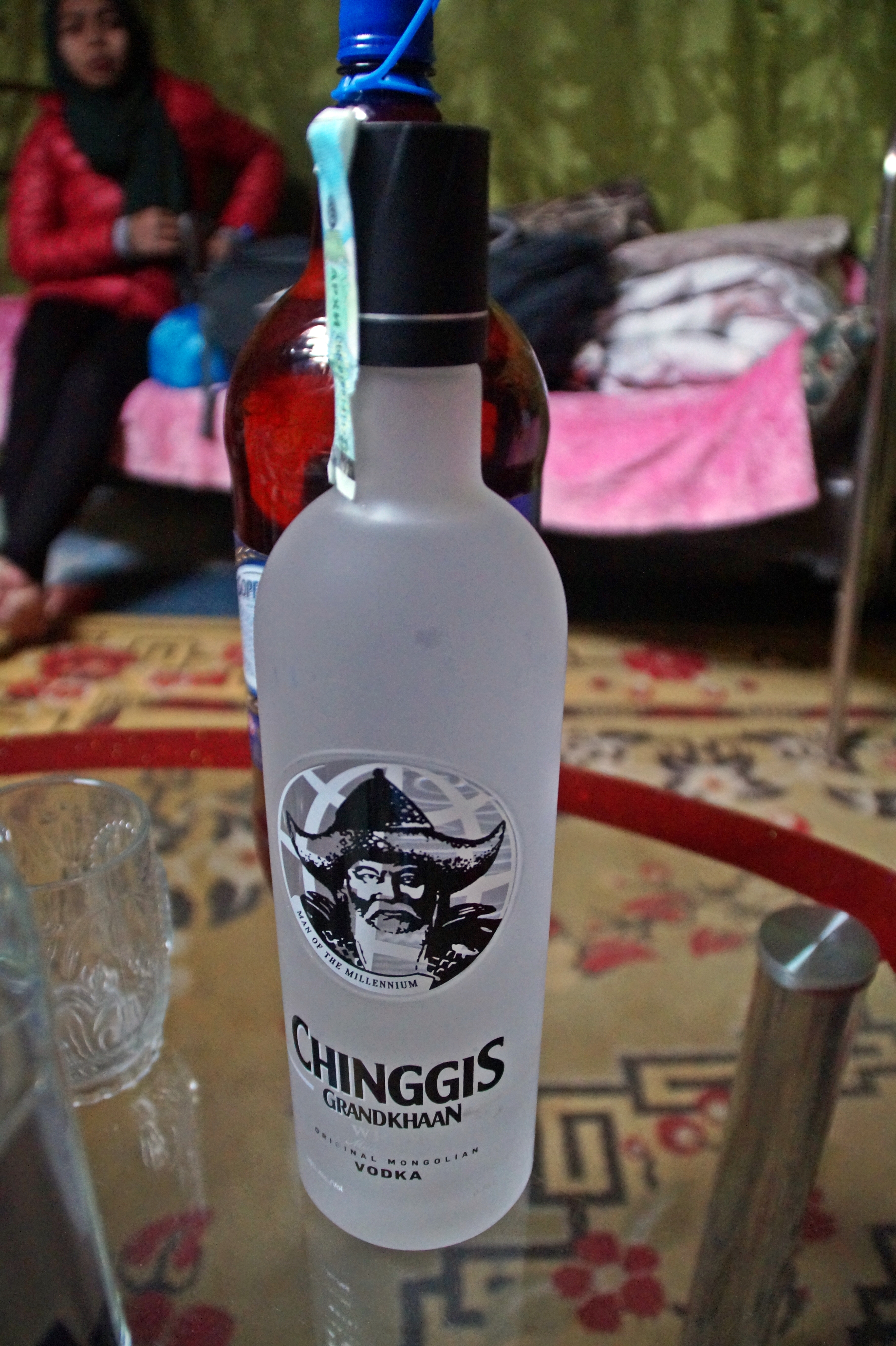

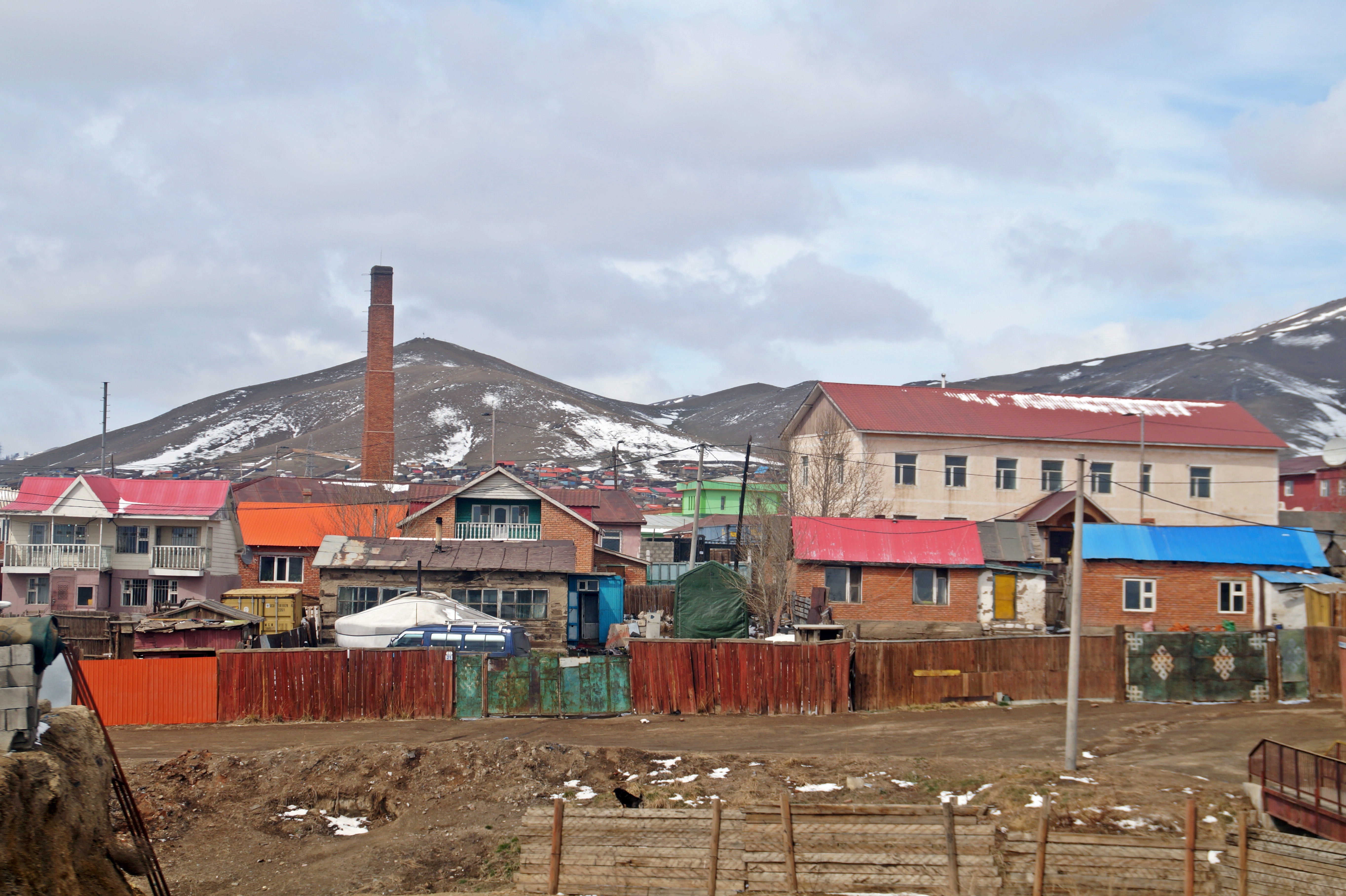
The Gobi experience has been amazing and I wouldn’t change a thing about it. We saw so many amazing sights, had a lot of laughs, lived like nomads for a week and got used to doing our toilet business in nature, which after all is the most natural thing to do.
I realize that visiting nomadic people on a tour isn’t very authentic, as that is taken away when a bunch of tourists on an organized tour show up at a ger, but still it felt real to me. At least more real than the experience would’ve been in any other country. Mongolia is such a sparsely visited place that even the organized Gobi tours – the most touristy thing to do in Mongolia – have a certain feel of authenticness. All the nomads that we met were in fact nomads and were living the same way that their ancestors lived, although they are now involved in the tourism business as well. Although I’m sure they’ve seen tourists 1000 times before, we were still met with curiosity, especially from the children, who are the realest of them all.
I’m very happy with my spontaneous decision to book the tour with Sunpath Hostel on my day of arrival, as the group I went with, the driver and the guide, made the experience very memorable. I spent several days after the tour missing it and wishing that I could go back – maybe someday I will!

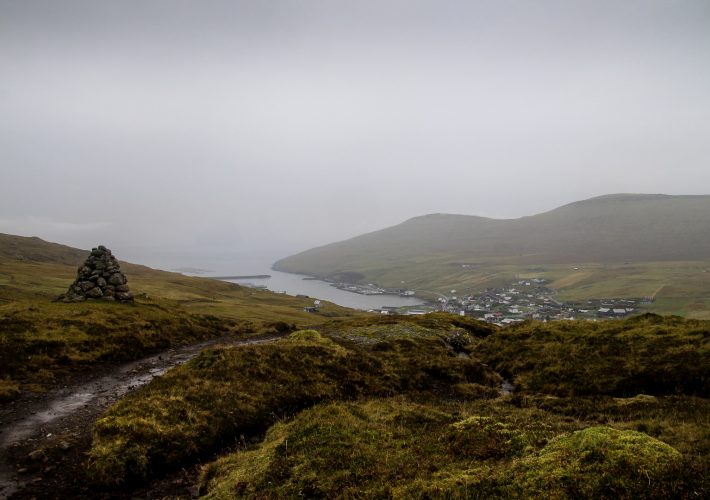
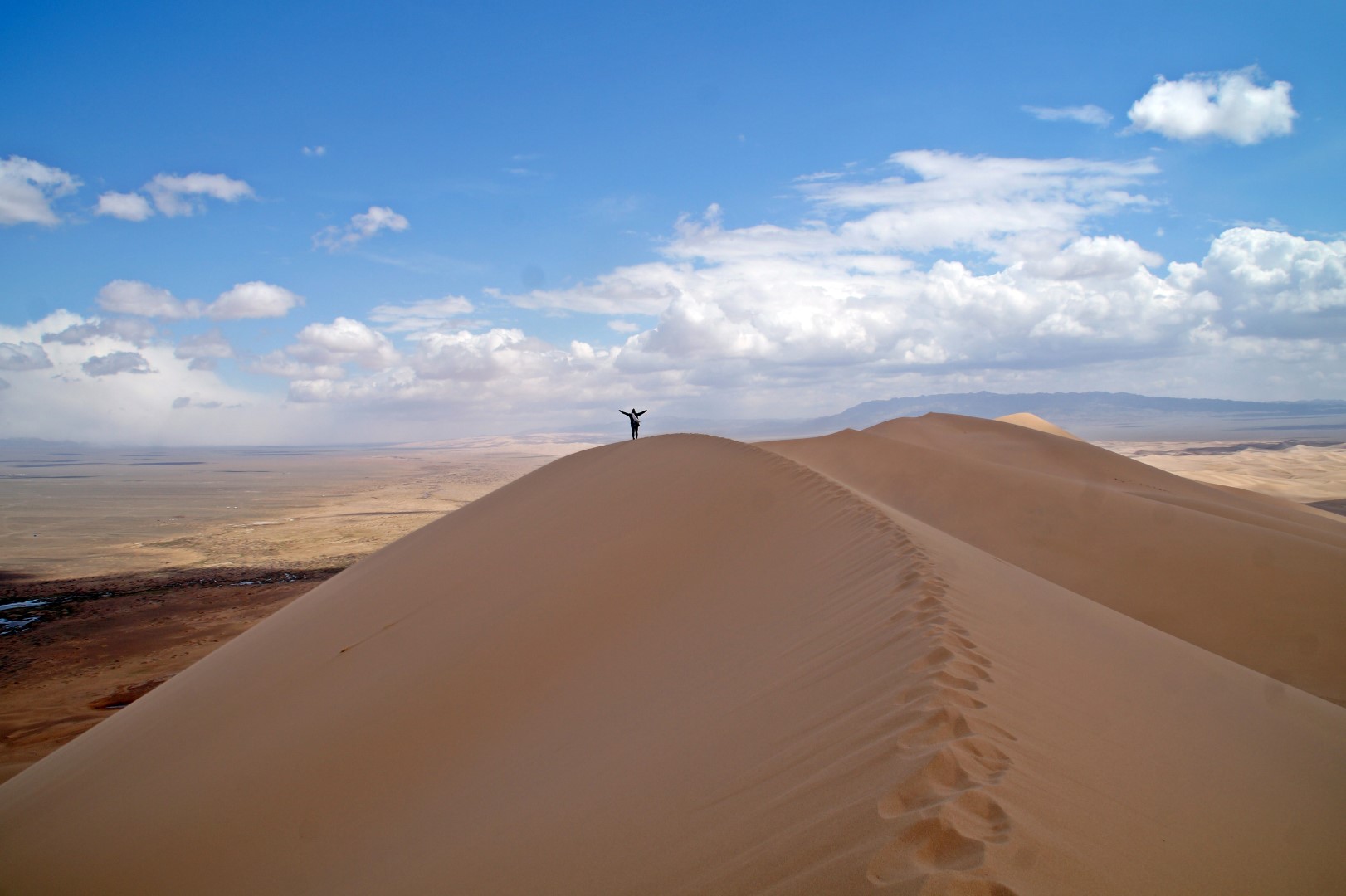
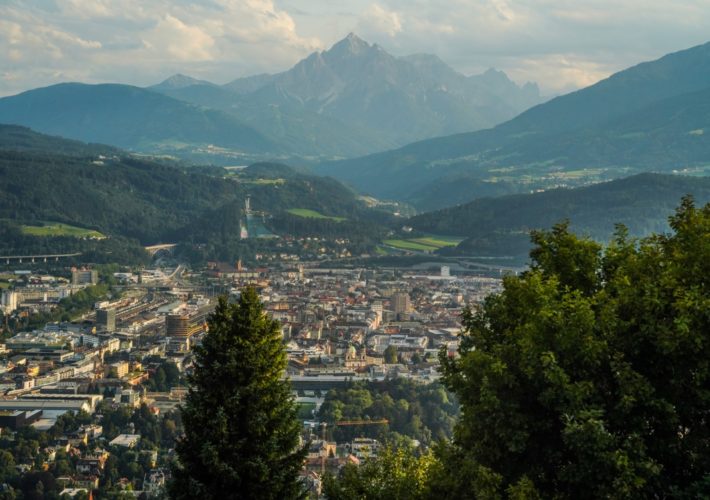

Leave a Comment